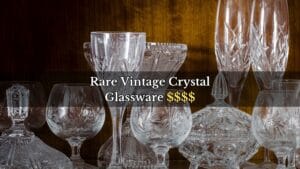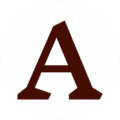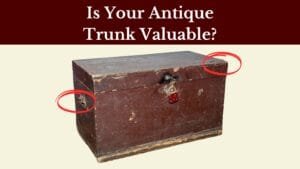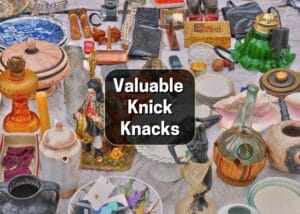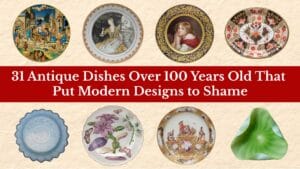Ever spotted a fancy crystal glass piece at a yard sale and wondered if it’s worth something? There are high chances that you might have walked past a small fortune. Rare vintage crystal glass items with unique patterns have been selling for extraordinary sums these days.
So, I’ve put together this list of 15 crystal pieces that are worth big money right now; knowing these valuable patterns and brands could turn your next $20 find into a $2,000 jackpot!

15 Highly Collectible Antique Crystal Dishware to Look for!
Old crystalware is not always valuable, but some items are more sought-after than others thanks to unique crystal patterns! Here are the most valuable crystal glass items, key tips to spot them, and their average values.
1. Waterford Lismore Bowls (1950s-1960s)

Waterford released the Lismore crystalware during its rebuilding period post World War II. Inspired by the gothic windows of Ireland’s Lismore Castle, the Lismore pattern displays deeply cut diamond and wedge patterns.
Early bowls from this period were hand-cut by master craftsmen who had trained under the original pre-war Waterford artisans. Mostly all types of Lismore bowls, including punch bowls, trifle bowls, dessert bowls, etc., are collectible.
Average Value: Depending on the condition, single Waterford serving bowls (8-10 inches) typically fetch $300-$600, with larger centerpiece bowls commanding $600-$800+. Pieces with original labels can bring premium prices.
2. Baccarat Crystal Harcourt Goblet Glasses
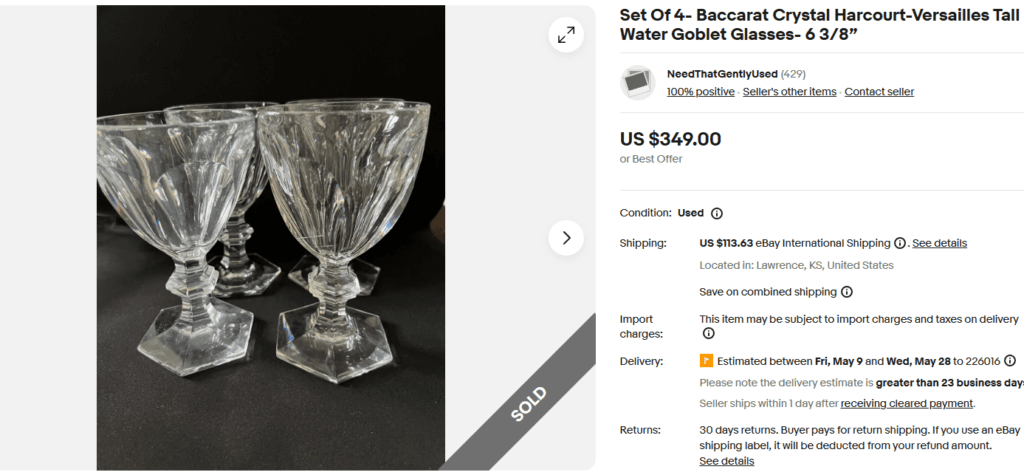
Introduced in 1841, the Harcourt pattern is Baccarat’s oldest and most prestigious crystal design, which has served many royal courts in Europe. Harcourt goblet glasses feature a distinctive hexagonal base with a faceted stem and a tumbler-style bowl with vertical cuts.
Average Value: Small vintage Harcourt goblet sets of 4 typically sell for $300-$600, with complete sets of eight goblets fetching $500 to $1,000 depending on age and condition.
3. Waterford Colleen Claret Wine Glass
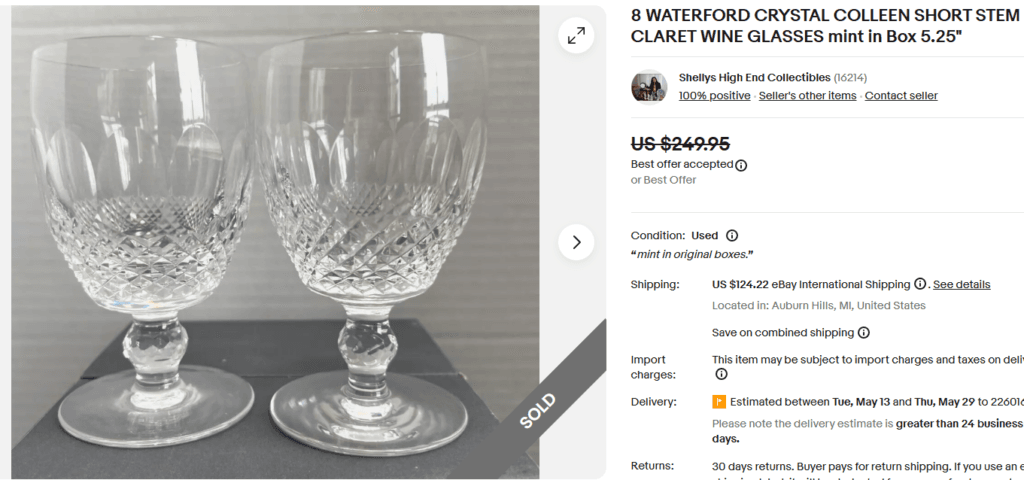
Colleen is another post-World War II pattern released by Waterford in the 1950s, which became the company’s signature design. These claret glasses were part of stemware sets exclusively designed for European-style formal dining practice in America.
The pattern features classic patterns with deep, intersecting vertical and horizontal cuts creating a unique “window.” Colleen Claret glasses feature a rounded bowl designed for red wine service.
Average Value: $100–$200 per glass and $250 to $1,000 per set, depending on condition and number of glasses.
4. St. Louis Thistle Champagne Flute
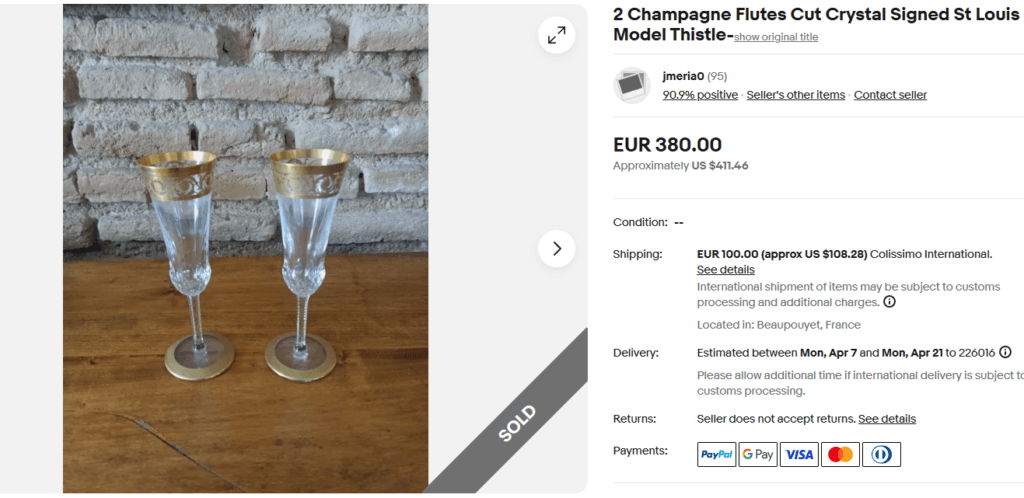
These rare Saint Louis champagne flutes are elegant, tall glasses featuring the complex Thistle pattern, combining honeycomb cuts, diamond patterns, and distinctive thistle motifs. Many examples (like the one shown above) include 24k gold detailing on the rims.
St. Louis introduced the Thistle pattern in 1913, and it quickly became the company’s most prestigious design.
Average Value: $250–$500 per flute, $400 to $1,000 per set, based on the number of flutes and their condition.
5. Steuben Rosa Van Dyke Champagnes Glasses
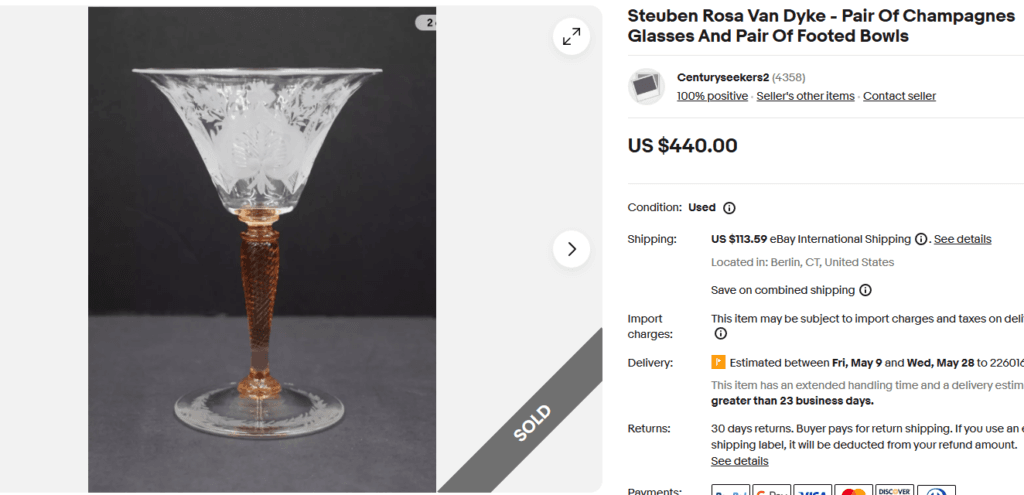
The Rosa Van Dyke champagne coupes feature a distinctive rose-pink tint in the stem (the “Rosa” coloration) and the signature Van Dyke cutting pattern of alternating plain and frosted oval cuts around the bowl.
This mesmerizing pattern was designed by Frederick Carder at Steuben in the 1930s, representing Steuben’s mastery of colored crystal stems.
Average Value: Rosa Van Dyke champagne glasses are among the most sought-after colored Steuben pieces, typically selling for $450-$1,200 each, while complete sets of 6-8 glasses can fetch $2,000-$4,000 or more.
6. Belgian Val St. Lambert Crystal Borodine Coupe Bowl
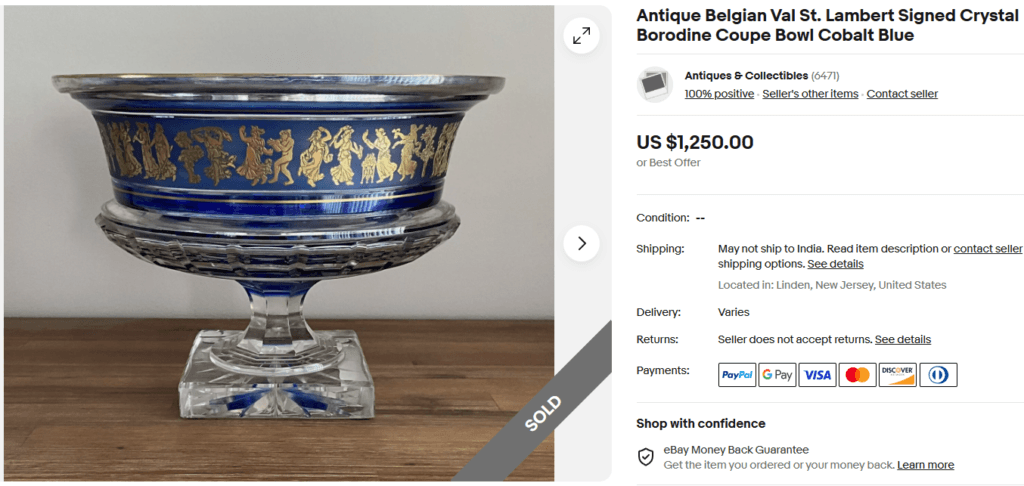
This one is a dramatic centerpiece or fruit bowl featuring the rare cobalt blue-to-clear “cased” crystal technique, where a layer of deep blue crystal is overlaid with clear crystal. The Borodine pattern features elaborate cutting that pierces through the blue layer to reveal the clear crystal beneath
Developed by Val St. Lambert in the 1920s-1930s, these cased crystal pieces are the epitome of European glassmaking technology.
Average Value: Single cobalt Borodine coupe bowls in excellent condition can command $1,000-$2,500, with complete sets fetching up to $5,000.
7. Fostoria American Punch Bowl
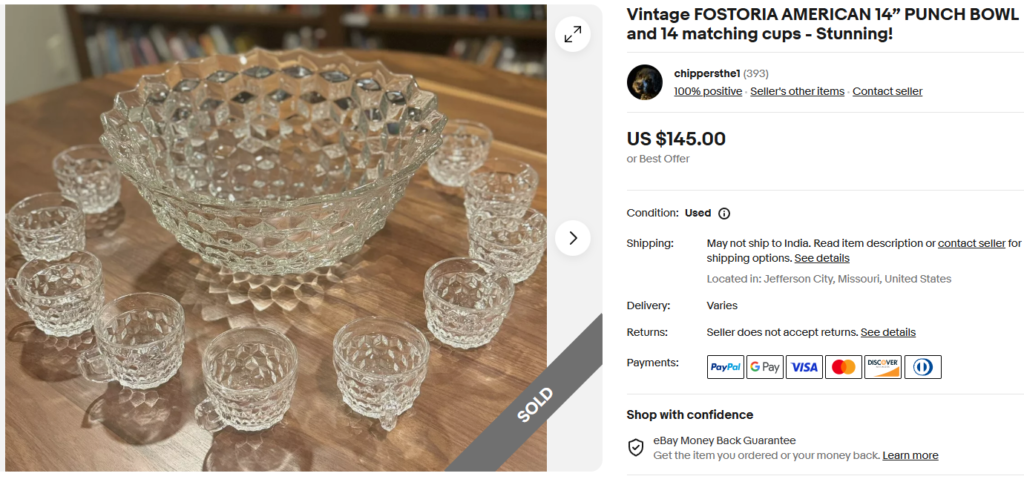
Fostoria’s American Punch bowl features the company’s most successful design, featuring distinctive cubic geometric patterns pressed into heavyweight crystal. The pattern remained in production until the factory closed in 1986.
The punch bowls were especially popular for wedding receptions during the mid-century period (1940s-1960s), with the complete set including the large main bowl (typically 14-16 inches in diameter), pedestal base, and often matching cups.
Average Value: Complete American pattern punch bowl sets in good condition can sell for $200-$800, with rare variations (such as colored examples) or complete sets with all 12 cups and ladle commanding up to $1,200.
8. Orrefors Prelude Wine Glass
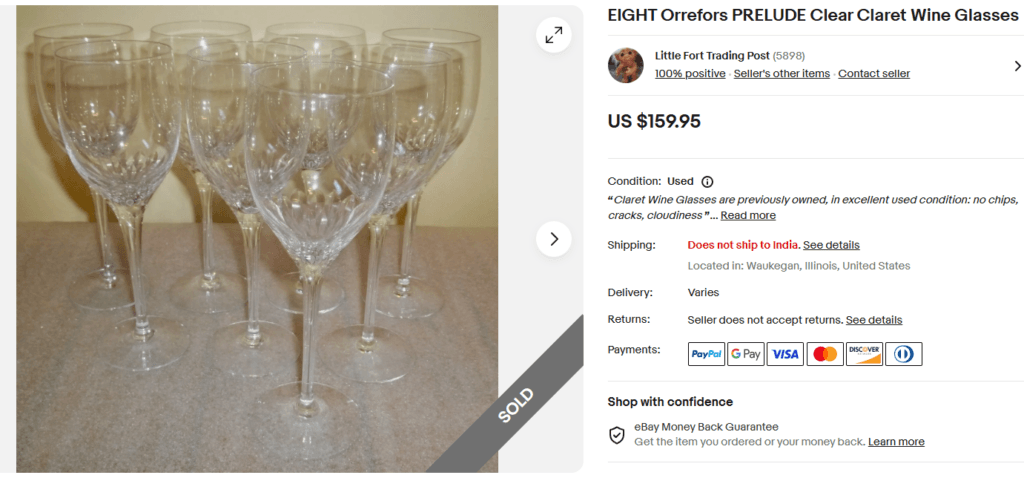
As the name indicates, these glasses showcase a distinctive, minimal Scandinavian pattern of vertical cuts that create a pleated or “prelude” effect from the base up through the stem and onto the bowl’s lower part.
This design was introduced by Nils Landberg in the early 1950s, and soon acquired its reputation as one of Orrefors’ most popular lines.
Average Value: Vintage Orrefors Prelude wine glasses from the 1950s-1960s typically sell for $50–$80 per glass and $150 to $800 or more for sets of 6-8 glasses.
9. Cambridge Rose Point Bowl

This serving bowl features Cambridge’s signature Rose Point pattern—an intricate etched design of rose blossoms connected by delicate latticework. These bowls typically measure 8-12 inches in diameter, with some including a Sterling silver base.
Rose Point was introduced in 1934 and soon became Cambridge’s most successful etched pattern. It’s truly an example of excellent American glassmaking before the industry collapsed after WWII.
Average Value: Cambridge Rose Point serving bowls with a silver base can fetch $400-$800. Rare forms or larger centerpiece bowls can command $900-$1,500.
10. Cambridge Rose Point Gold Encrusted Cordial Glasses
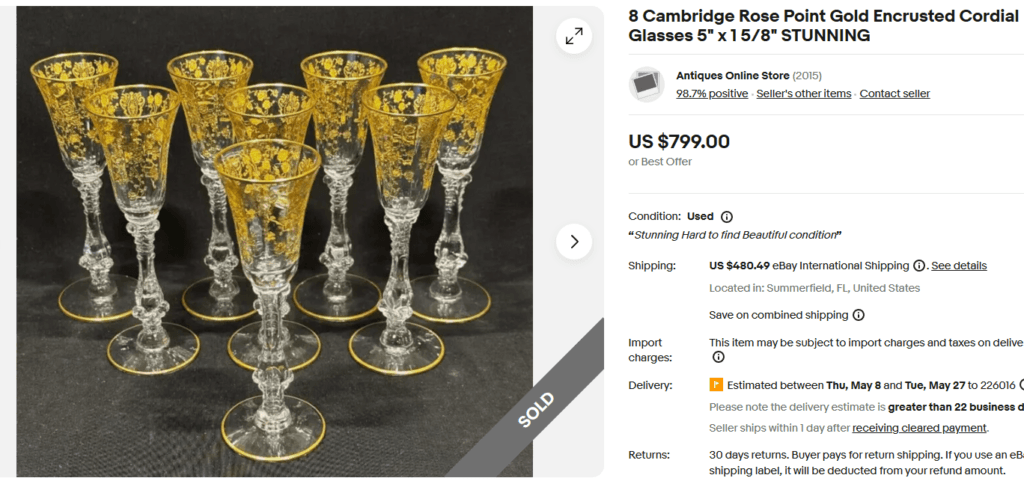
Cambridge reserved the gold encrusting technique for their premium offerings in the 1930s-1950s. One of its fine examples is the cordial glasses featuring the distinctive Rose Point etched pattern with additional 24k gold highlighting applied to the rims and key design elements.
This lavish stemware represented the highest level of American glass decoration and was primarily sold through high-end department stores only, making it rare.
Average Value: Rose Point gold-encrusted cordials in perfect condition (with minimal gold wear) are valued at $200-$400 each. Complete sets of 8-12 glasses can command $800-$2,000, especially with original boxes.
11. Edinburgh Crystal Thistle Whisky Decanter
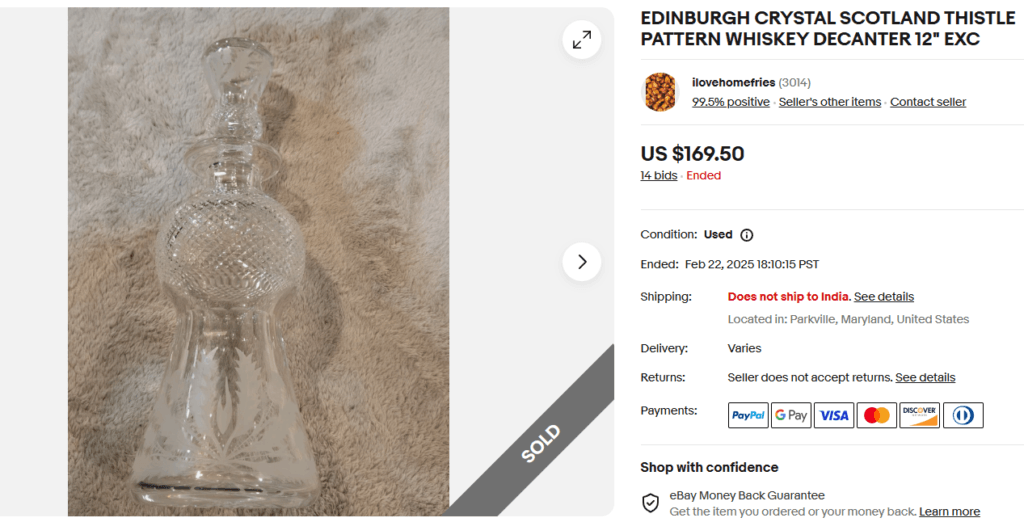
This is a rare decanter from Edinburgh with a stopper featuring a combination of the Scottish thistle motif and elegant diamond and fan-cutting pattern. You’ll see a distinctive thistle-shaped finial on the stopper, which may sometimes feature additional silver decoration.
The Thistle pattern was a perfect example of Scottish craftsmanship, which is why it became Edinburgh Crystal’s signature design. Besides, the decanters became more popular during the 1950s whisky boom!
Average Value: Vintage Edinburgh Thistle whisky decanters from the 1950s-1960s can be worth $300-$600, with sterling silver-mounted examples commanding $800-$1,500.
12. Bohemian Czech Cut-to-Clear Crystal Goblet

These goblet glasses are a stunning example of the “cut-to-clear” crystalware—items made with a technique where the colored outer layer is cut through to reveal clear crystal beneath. The emerald green goblets feature elaborate star, circles, or geometric cutting patterns.
This technique was developed in the 19th century by Bohemian (now Czech Republic) glassmakers and was heavily used in the 1920s and 1930s.
Estimated Value: $70–$100 per goblet and $150 to $700 for sets of 4 to 6 glasses.
13. Millersburg “Hobstar & Feather” Platter
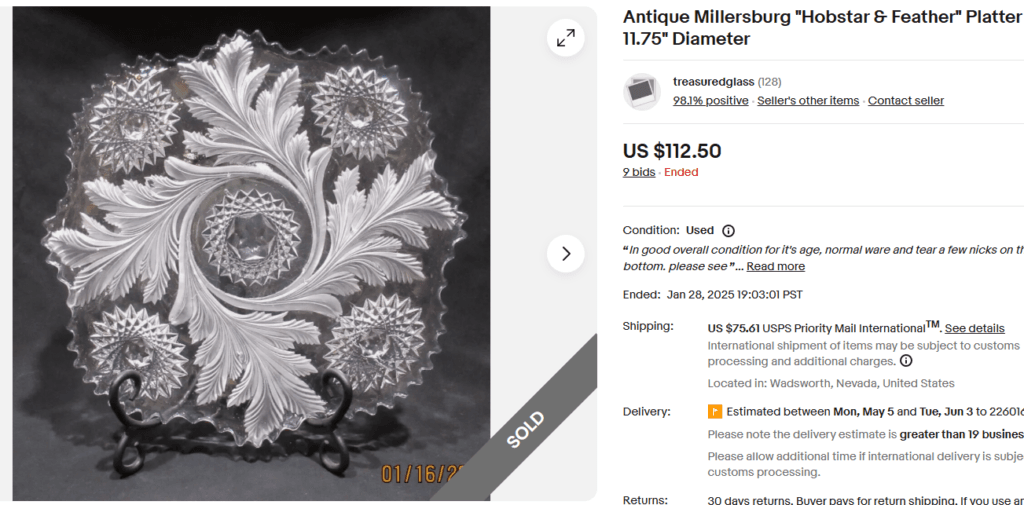
Produced by the Millersburg Glass Company between 1909-1911, this rare platter (12-16 inches) displays the distinctive Hobstar central motif (a deep-cut star pattern) surrounded by delicate feather designs and other Hobstar motifs.
These pieces often have a distinctive carnival glass-like finish that separates them from other American brilliant period crystal and glassware. Also, the company produced crystalware for only 27 months, making these examples exceptionally rare.
Average Value: Authentic Millersburg Hobstar & Feather platters can fetch $200 to $500 per piece, depending on the condition.
14. Tiffany & Co. Rock Cut Crystal Tumbler
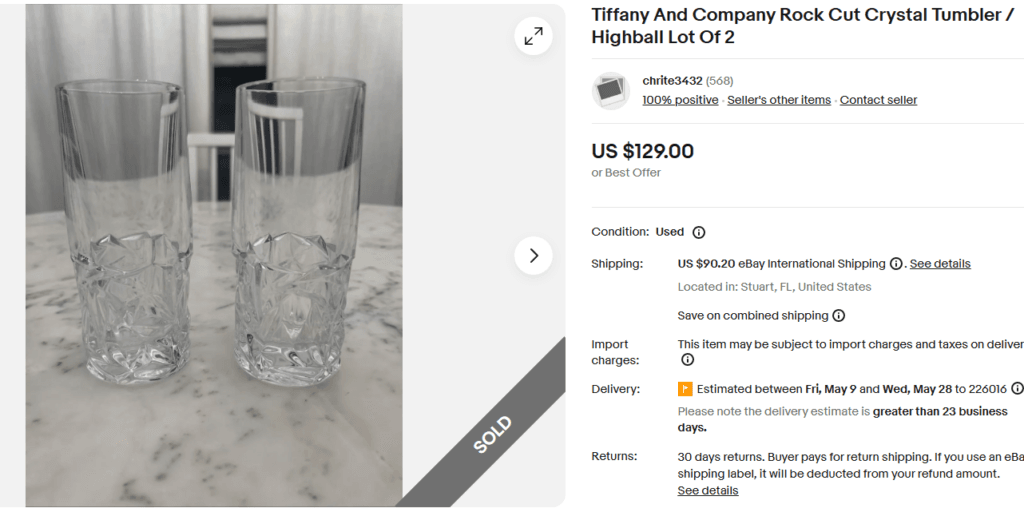
Tiffany & Co.’s crystal tumblers are heavy, straight-sided drinking glasses featuring the distinctive Rock Cut pattern, a complex geometric design of deep cuts creating prismatic reflections at the lower body of the glasses.
This 1980s-1990s crystalware pattern was inspired by American Brilliant Period glassware with a touch of contemporary style for the market.
Average Value: Tiffany Rock Cut tumblers in original condition with Tiffany markings typically sell for $100-$150 each or a set of two, with complete sets of four reaching $600-$1,000.
15. Moser Crystal Lady Hamilton Wine Glasses

These glasses are a part of a special line of Bohemian crystal drinkware featuring the unique “papal cut” design on the chalice (thick glass at the bottom and thin at the rims), accentuated with 2-karat gold work at the edges.
This pattern was released in the 1930s as a tribute to Emma Hamilton, the wife of British diplomat William Hamilton, and was also produced in colored crystals.
Average Value: Vintage Lady Hamilton white glasses can fetch $100-$150 per piece and $200 to $500 per set (4-6 glasses). Pieces in rare colors (purple, blue, or green) can bring $300-$1,000.
Note: This article is intended for informational, educational, and entertainment purposes only. Some images are illustrative and may not represent actual brands, products, or related entities. All trademarks, product names, brand logos, packaging, and other intellectual property referenced remain the exclusive property of their respective owners. Any brand mentions or references are provided solely for descriptive and educational context and do not imply any formal or commercial association.

